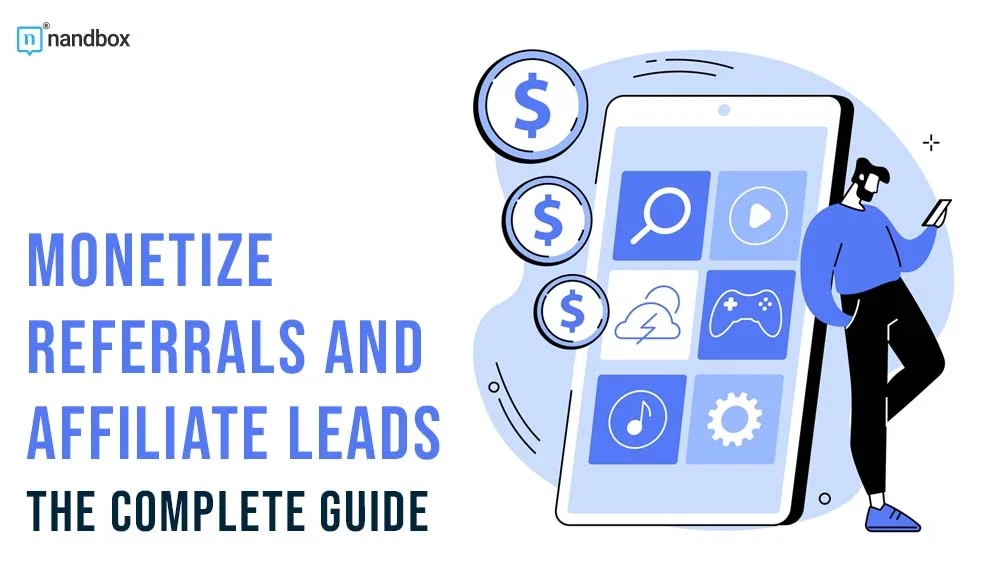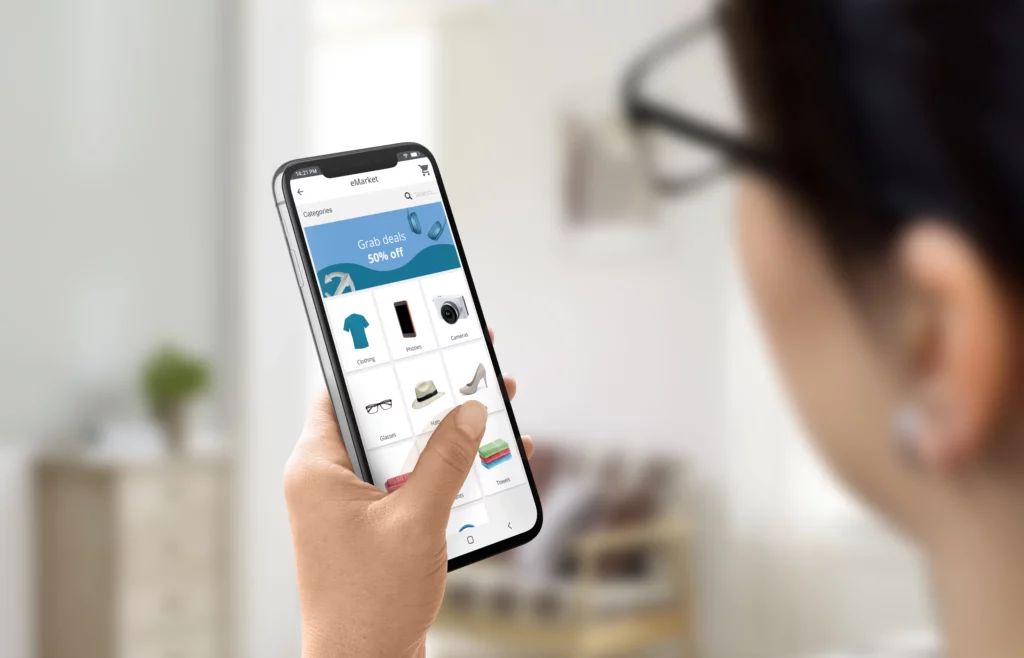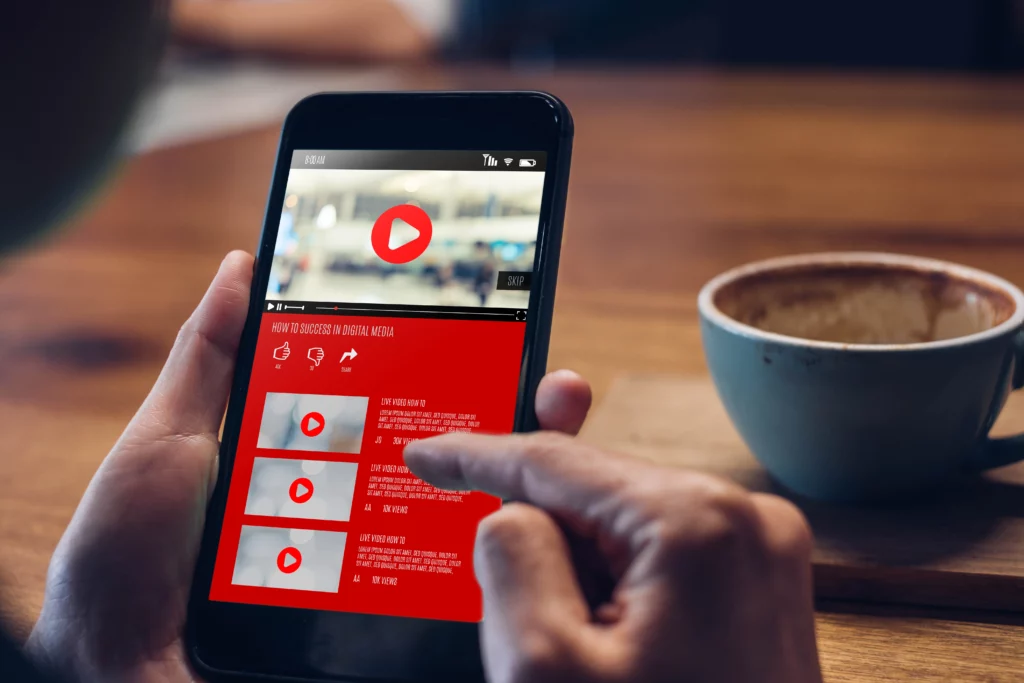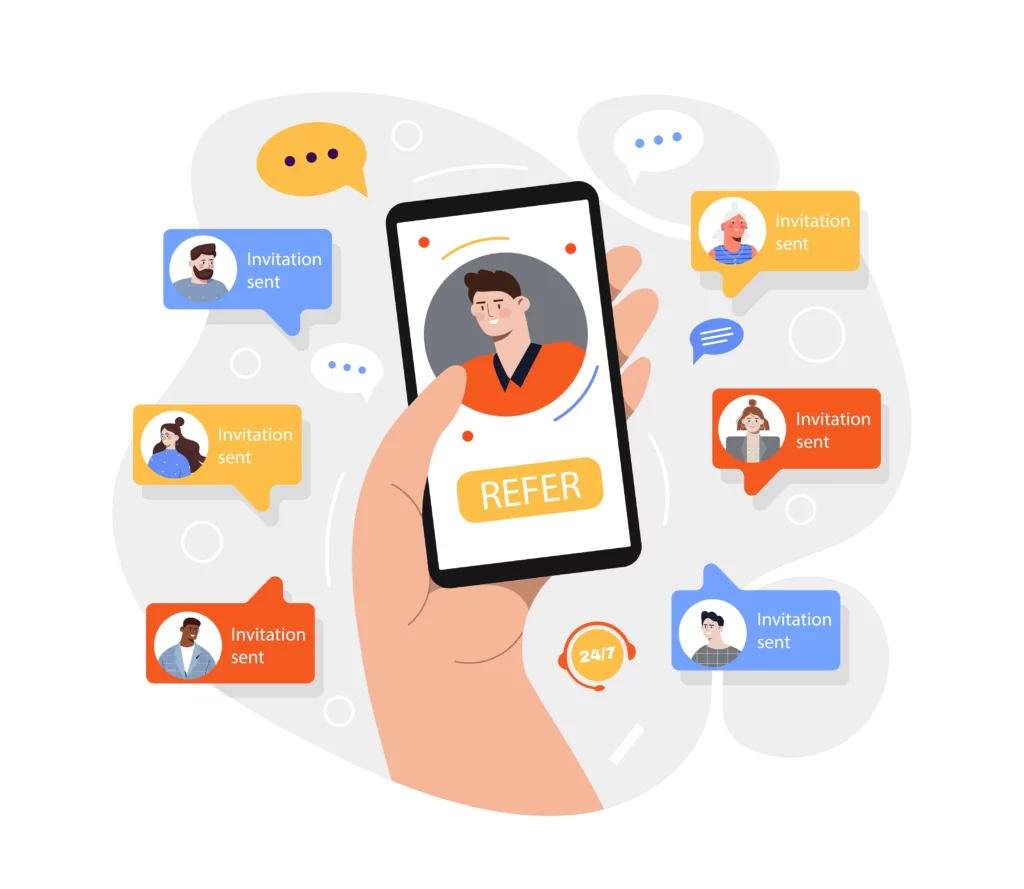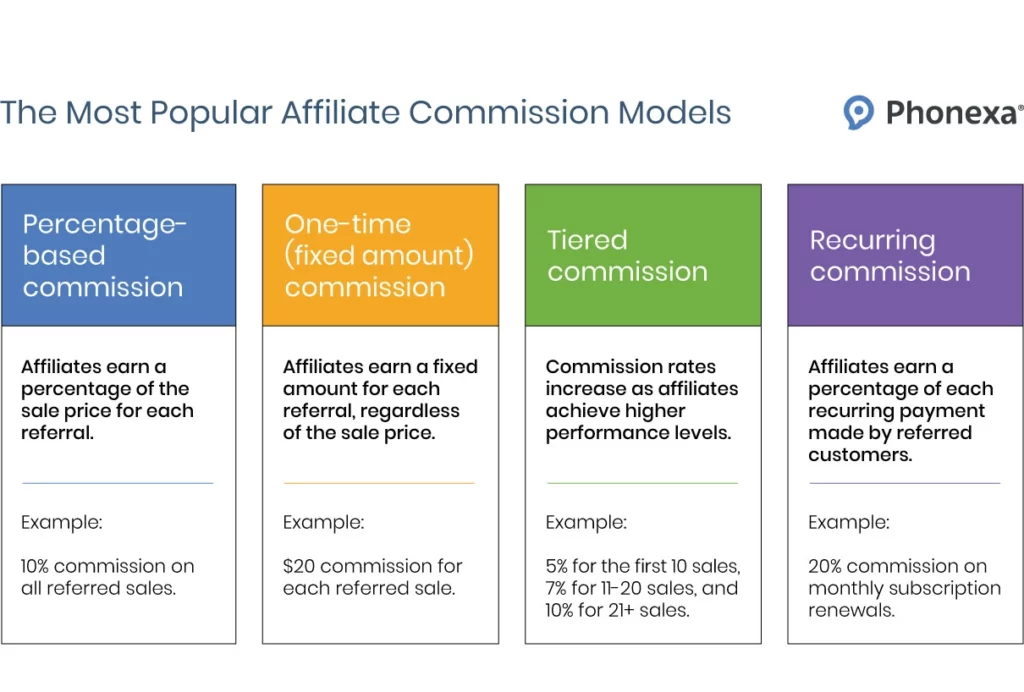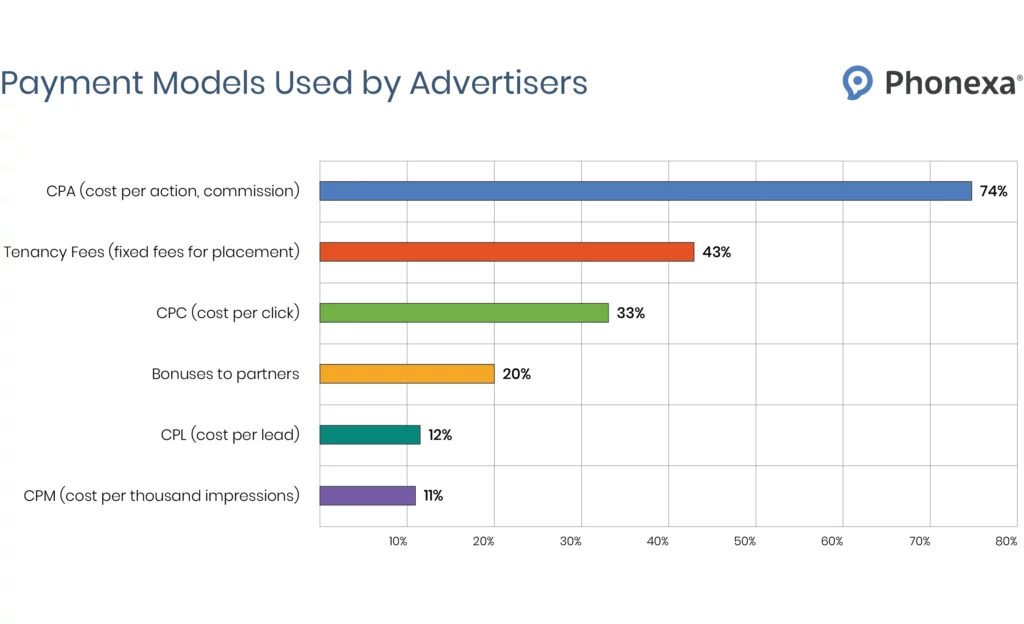Affiliate and Referral Marketing Guide for App Monetization
Whether you sell physical or digital products, you likely have an app that connects mobile users to your business—most brands do. But have you ever considered using this app as an extra revenue source—more precisely, monetize affiliate leads and referrals and traffic acquisition channels? The great thing is that all your app users are, in fact, already high-intent leads. So, you only have to direct them to a relevant product or service that reinforces your core offering. Then, you can track your affiliate links to double down on your most successful campaigns. For example, if you run an auto repair shop, you can promote auto insurance. And if you sell B2B software, you can advertise compatible digital products that synergize with your software.
Read on to learn more about:
- How to generate and monetize affiliate traffic with a mobile app
- How to generate and monetize referral traffic with a mobile app
- In-app affiliate marketing basics (read this if you’re a beginner)
Without any further ado, let’s dig into the nitty-gritty of in-app affiliate and referral traffic generation.
How to Generate and Monetize Affiliate Traffic with a Mobile App
When it comes to generating affiliate traffic with your mobile application, remember, for this article, I assume you already have some app users. There are two possible routes you can take:
- You can join an affiliate marketing network. Affiliate networks like Amazon Associates, ShareASale, or CJ Affiliate unite hundreds of thousands of advertisers that promote millions of products. So you can easily find the traffic demand you’re looking for.
- You can try and find advertisers directly. Reaching out to advertisers directly is a viable yet more complex approach with one major advantage. You don’t have to pay a commission on your affiliate earnings. But there’s a lot of work to do on your own.
Long story short, joining a reputable affiliate network is a safer choice for most app developers who want to monetize their traffic. In addition to a big pool of products to promote, you will likely get free access to affiliate link tracking software and the advertiser’s creative materials like banners, video ads, etc.
Option 1—Integrate In-App Banners
In-app banners displayed in non-intrusive places—typically at the top or bottom of the screen—are one of the smoothest ways to promote products without annoying your users. These are quite easy to integrate if you use an SDK integration toolkit the affiliate network provides.
The only fly in the ointment is that you only have so much control over which ads are displayed. Bigger affiliate programs use programmatic advertising. This only allows you to choose the category of ads to display—software, fitness, clothes, etc.
So if you want full control over your in-app ads, there’s no way around it. You should partner with advertisers directly, cherry-picking your ads and possibly negotiating about the ads you don’t want to display.
In-App Affiliate Ads
| Advantages | Disadvantages |
| Minimal disruption | Limited control over which ads are displayed |
| Shown for a prolonged period of time | Less-than-perfect matching |
| Easy to integrate and require no effort | Relatively low engagement rates |
| Revenue grows as your app traffic grows | Commission paid to the affiliate network |
| No upfront and low maintenance cost | Potential blocking with ad blockers |
Important: Whatever you promote, you must use an affiliate link or a promo code that connects your campaign to the advertiser. Otherwise, there’s no way for the advertiser to know which sales are attributed to which affiliates and where these customers came from.
Option 2—Integrate Video Advertisement
Integrating video ads is a bit more nuanced because the whole concept relies on interrupting the user watching the ad, especially if it’s displayed midstream. Truth be told, video ads can be irritating, but it’s up to you to set the stage for them.
Of course, not all apps are a good fit for video ads. For example, gaming applications may benefit from video ads immensely, whereas navigation or finance apps may not be a good match. This is because of the higher focus of the user and the potentially higher cost of a mistake.
The diversity of video ads is quite impressive, with the most practical ads being
- Full-screen video ads displayed at natural transitions or breaks within the app
- Rewarded video ads that incentivize users to watch a video
- Exit video ads that are shown when the user closes the app
- Native video ads that blend in with the content
Speaking of native video ads, they might be the most organic way to drive affiliate leads to your advertiser while guaranteeing none is annoyed with your suggestions. But then again, you may not get the required quality with all affiliate networks. Remember, affiliate networks provide only limited control over the displayed ads, so some research should be done here.
Option 3—Offerwalls
An offer wall is a list of actions—app installs, downloads, sign-ups, etc.—that pay in-app credits or other bonuses when completed. Through an offer wall, you allow users to choose among multiple options rather than forcing a single choice, which is a better way to sell a product.
But then again, if you advertise through an offer wall, you should present a list of more or less equal options from various brands, so you might have to partner with several advertisers at once. Most affiliates enroll in several affiliate programs to mitigate the risk of relying on a single source of income.
Option 4—Use Good Old Affiliate Links
Last but not least, users can simply place good old contextualized affiliate links without using any creative materials. As with other strategies, ensure your affiliate links are perceived as a natural recommendation rather than a hard sell.
Important: In most countries, you must disclose the affiliate nature of your links when promoting third-party products. In the U.S., the Federal Trade Commission (FTC) requires clear disclosure of any material connection between publishers and advertisers.
How to Generate and Monetize Referral Traffic with a Mobile App
Now that we have discussed how to monetize affiliate leads, let us discuss referrals. First things first: referral marketing is a great mobile app monetization strategy, but it’s completely different from affiliate marketing. In affiliate marketing, you sell your traffic; in referral marketing, you generate traffic by incentivizing your current users to invite new users.
Referral and affiliate traffic synergize perfectly well: the former helps promote your app, whereas the latter helps monetize newly acquired users. The more popular you are, the easier it is to gain referees; therefore, influencer referral programs are the most successful.
To kick things off with in-app referral marketing, you have to create a referral program first, setting clear terms and conditions for referrers (existing users who invite new users) and referees (those invited to your app).
Here are Some Essential Things You Should Do To Acquire More Referral Traffic:
| Integrate referring into your app
|
It’s crucial that referring new users is simple—by copying a link in the app and sharing it on social media, email, messengers, etc. |
| Implement reward tiers | Whether you’re paying real money to referrers or providing them with discounts or bonuses, increasing the size of rewards for bigger referrers is a great retention strategy. |
| Offer two-way incentives | Besides the type and size of reward—the bigger, the better—make sure both referrers and referees are incentivized to take action. A good combo would be a monetary reward to referrers and a discount to referees. |
| Gamify the process | The referral process is not necessarily only about income but also fun to some extent. For example, you can create a leaderboard where top referrers can find themselves. |
Of course, the type and size of reward still remain the focal point of your referral program. Depending on your app, you can offer monetary rewards (probably the most effective), discounts on future purchases, in-game currency or boosts, loyalty points, or even merchandise.
In-App Affiliate Marketing Basics (Those In the Know—You May Skip It)
At its core, in-app affiliate marketing is exactly the same as traditional affiliate marketing, barring the traffic source being your application as opposed to more conventional traffic sources like websites, blogs, or social media.
Here’s how in-app affiliate marketing is usually done:
- An affiliate (mobile app owner) who has certain traffic researches the market and applies for a suitable affiliate program.
- The affiliate network that runs the program accepts the affiliate and provides them with (a) creative materials so they can start instantly promoting and (b) link-tracking software so they can track their progress and make sure they get due revenues for every conversion.
- Once the affiliate generates above the minimum commission threshold, they can release the payouts, or they will be issued automatically.
Even though bigger affiliate networks mostly automate in-app affiliate marketing, there are still a few important decisions to make, including choosing your traffic monetization model.
How To Choose the Best Traffic Monetization Model for Your Mobile App
It’s paramount to understand commission models—what you are paid for.
While you might intuitively gravitate towards affiliate programs that pay a commission on the sale. For example, a customer clicks on your affiliate link, spends $100 on a subscription plan, and then gets a $5 commission—pay per sale may not even be your best monetization model.
Popular Monetization Models You Can Choose to Monetize Your App Traffic:
Pay-Per-Sale
Closing sales is more difficult than making users view, click, install, or download. This means you have to go the extra mile to offer the most relevant product so users actually buy them rather than, say, a simple click to receive free credits in your app.
The biggest drawback of pay-per-sale, though, is that you rely on the advertiser that converts your traffic, and—for example, if you generate phone calls—there’s no way to know in advance how the sales rep on the other end will perform.
Pay-Per-Lead
The second-most popular monetization model is a flat commission per lead, which ranges from a few to a few hundred dollars depending on the lead’s quality. Within the pay-per-lead model, you get paid for all qualified leads and don’t rely on the advertiser’s sales skills.
Pay-Per-Click
Monetizing clicks is a surefire way to convert your traffic into revenue. As long as these clicks pass your advertiser’s qualification criteria: location, age, gender, income, etc. For example, advertisers may not accept leads from certain states or traffic channels (social media, gambling websites, etc.).
Less Popular Models
Depending on the type of campaign, advertisers can also monetize impressions, installations, downloads, and any other action that may eventually generate revenue. Of course, the farther the action from the actual purchase, the less you receive for it, but it’s the numbers game at the end of the day.
Here’s How Much You Can Earn with Affiliate Marketing
The sky’s the limit. In theory, you can earn millions of dollars with affiliate marketing. However, taking it down to earnings, there are statistics to refer to: around 3.78% of affiliates make over $150,000 annually, and around 30% make $10,000 to $150,000.
One thing is certain, though: as an app owner, you can use affiliate marketing to monetize your traffic. It’s quite important as it provides added value to your users. And if you do it organically and analyze your campaigns, the numbers will come—there’s no doubt about it.
